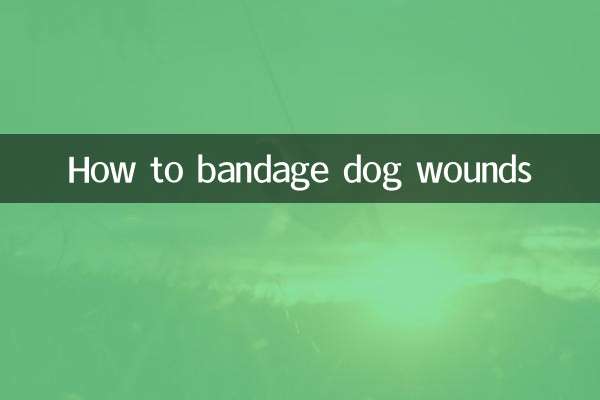How to distinguish between skin diseases of dogs: a comprehensive analysis and practical guide
Recently, pet health issues have become one of the hot topics, especially the identification and care of skin diseases in dogs. Many pet owners tend to confuse symptoms when facing dog skin problems, resulting in delayed treatment. This article will combine the hot content of the entire network for the past 10 days to analyze in detail how to distinguish common dog skin diseases and provide structured data to help you make quick judgments.
1. Common types and symptoms of skin diseases in dogs

There are many types of skin diseases in dogs, mainly divided into four categories: fungal, bacterial, parasitic and allergic. Here is a comparison of their typical symptoms:
| type | Main symptoms | High-incidence areas |
|---|---|---|
| Fungal (such as Microsporidium canis) | Round hair removal, increased dander, redness in the skin | Head, limbs, torso |
| Bacterial (eg, pyoderma) | Redness, pustules, ulceration, and odor | Abdomen, folds |
| Parasitic (such as scabies mites) | Severe itching, scabs, thickening of the skin | Ears, elbows, abdomen |
| Allergic (such as food allergies) | Systemic erythema, frequent scratching, local hair loss | Face, claws, underarms |
2. How to initially determine the type of skin disease?
1.Observe the duration of symptoms: Fungal infections usually develop slowly, while allergic or parasitic infections may suddenly appear.
2.Check the degree of itching: Parasitic skin disease is the most severe itchy, followed by bacterial properties, and fungal properties may only be mild itchy.
3.Smell the smell: Bacterial infection is often accompanied by a rotten smell, while other types of odor are not obvious.
3. Recent popular nursing misunderstandings and correct methods
According to the social media discussion in the past 10 days, the following misunderstandings need special attention:
| Misconception | The correct way |
|---|---|
| Treatment with human skin diseases ointment | Use special pet drugs to avoid overdose of hormones |
| Frequent bathing to "sterilize" | Excessive cleaning can damage the skin barrier, it is advisable to have 1-2 times a week |
| Ignore environmental disinfection | Fungi and mites need to be treated simultaneously (such as nest pads, toys) |
4. Emergency treatment and medical advice
If the following situations are found, it is recommended to seek medical treatment immediately:
- Large-scale ulceration or ooze of the skin;
- Dogs have a decreased appetite and a weak spirit;
- No improvement after 3 days of home care.
Through the above structured comparison and hot spot analysis, I hope you can more accurately identify the type of skin disease in dogs and take scientific measures in a timely manner. Pet health is no small matter, early detection and early treatment is the key!

check the details

check the details